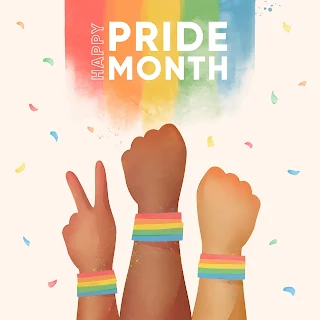Every June, a vibrant sea of rainbow flags fills the streets, representing a celebration of love, acceptance, and equality. Pride Month has become a significant cultural and historical event worldwide, fostering inclusivity and honoring the LGBTQ+ community. But have you ever wondered why June was chosen as the designated month for this celebration? In this blog, we will dive into the history of Pride Month, explore its significance, and highlight its current relevance.
The Stonewall Uprising: A Catalyst for Change:
To truly understand the origins of Pride Month, we must travel back to the early morning hours of June 28, 1969, in New York City. The Stonewall Inn, a popular gathering place for the LGBTQ+ community, was raided by the police. This event, known as the Stonewall Uprising, sparked a series of protests and demonstrations that lasted for several days. The brave individuals who fought back against systemic oppression and discrimination during this time laid the foundation for the modern LGBTQ+ rights movement.
Birth of Pride Month:
In the following years, the anniversary of the Stonewall Uprising became a symbolic moment to commemorate the LGBTQ+ community's struggle for equality. Activists organized pride marches and parades on the last Sunday in June to honor the historic event. Over time, this commemoration expanded into a month-long celebration, now known as Pride Month.
Why June?
June was chosen for several reasons. Firstly, it marked the anniversary of the Stonewall Uprising, a pivotal moment in LGBTQ+ history. Secondly, it coincided with the summer solstice in the Northern Hemisphere, allowing for outdoor celebrations and vibrant gatherings. Furthermore, June also honored other important milestones, such as the formation of the Society for Human Rights in 1924, one of the earliest known gay rights organizations in the United States.
A Global Celebration:
Today, Pride Month has transcended its origins in the United States and has become a global celebration of diversity and love. Major cities around the world host Pride parades, festivals, and events, attracting millions of participants and allies. It serves as a powerful platform for raising awareness about LGBTQ+ rights, promoting inclusivity, and advocating for social change.
Current Insights and Relevance:
While Pride Month is a joyous occasion, it also serves as a reminder of the ongoing challenges faced by the LGBTQ+ community. Despite significant progress, discrimination, violence, and inequality persist in many parts of the world. Pride Month acts as a catalyst for conversation and activism, inspiring individuals and organizations to fight for equal rights, representation, and acceptance.
One of the recent developments within the LGBTQ+ movement is the increasing recognition and visibility of transgender rights. Transgender individuals, who face unique struggles and experiences, have been at the forefront of advocacy efforts. Their courage and resilience continue to reshape societal perceptions and challenge gender norms, making Pride Month an opportune time to amplify their voices and support their cause.
Additionally, Pride Month is an invitation for everyone to become allies and promote inclusivity. It encourages individuals to educate themselves, engage in respectful dialogue, and challenge their own biases. It provides an opportunity to understand the importance of intersectionality within the LGBTQ+ community, recognizing that people's experiences are shaped by their race, ethnicity, religion, disability, and other aspects of their identity.
Conclusion:
Pride Month is more than just a celebration; it is a testament to the triumphs, struggles, and resilience of the LGBTQ+ community throughout history. It serves as a powerful reminder of the progress made and the work that lies ahead. As we commemorate Pride Month each year, let us embrace diversity, foster acceptance, and continue to champion equality for all.


